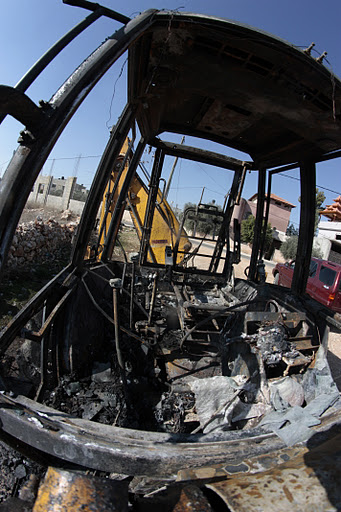Tag: Arson Attack
-
Settlers set ground on fire in Salman Valley, Burin [Update: Video added]
By Stephen Alexander November 6th 2012 | International Solidarity Movement, West Bank Today at around sundown, settlers from the illegal Israeli settlement of Yitzhar set fire to the ground in the Salman valley in Burin. The fire was in the same location where two ISMers and two members of the Michigan Peace Team (MPT) had…
-

In Photos: The devastation of the Price Tag campaign in Bruqin
by Amal 8 December 2011 | International Solidarity Movement, West Bank The smell of fire and sorrow was evident in Bruqin today, which is located to the west of Salfit in the northern area of the West Bank. Even eight hours later the feeling of loss populated the air. At approximately 2:30 AM a group of…
-
Settlers burn ISM tent in East Jerusalem’s Sheikh Jarrah
14 September 2011 | The Alternative Information Center At about 2am on Monday, 11 September, settlers in the East Jerusalem neighborhood of Sheikh Jarrah burnt to the ground an International Solidarity Movement tent that had been established to monitor and prevent settler violence in the neighborhood. The tent, which thankfully was empty at the time…
